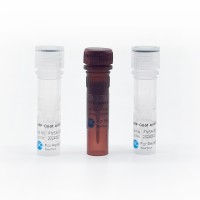Molecular Methods Used for Detection of Minimal Residual Disease Following Hematopoietic Stem Cell Transplantation in Myeloid Disorders
互联网
互联网
相关产品推荐

Recombinant-Hordeum-vulgare-High-molecular-mass-early-light-inducible-protein-HV58-chloroplasticHigh molecular mass early light-inducible protein HV58, chloroplastic; ELIP
¥10556

磁珠法残留DNA样本前处理试剂盒(瓶装)| Magnetic Residual DNA Sample Preparation Kit
¥500

APC Goat Anti-Mouse IgG (H+L) Antibody(minimal x-reactivity)
¥700

HB Western blotting Principles and Methods
¥223

EmbryoMax™ 青霉素-链霉素溶液,100X,用于细胞培养, The EmbryoMax Penicillin-Streptomycin Solution, 100X is available in a 100 mL format and may be used for routine mouse embryonic stem cell culture applications.,阿拉丁
¥174.90
相关问答

